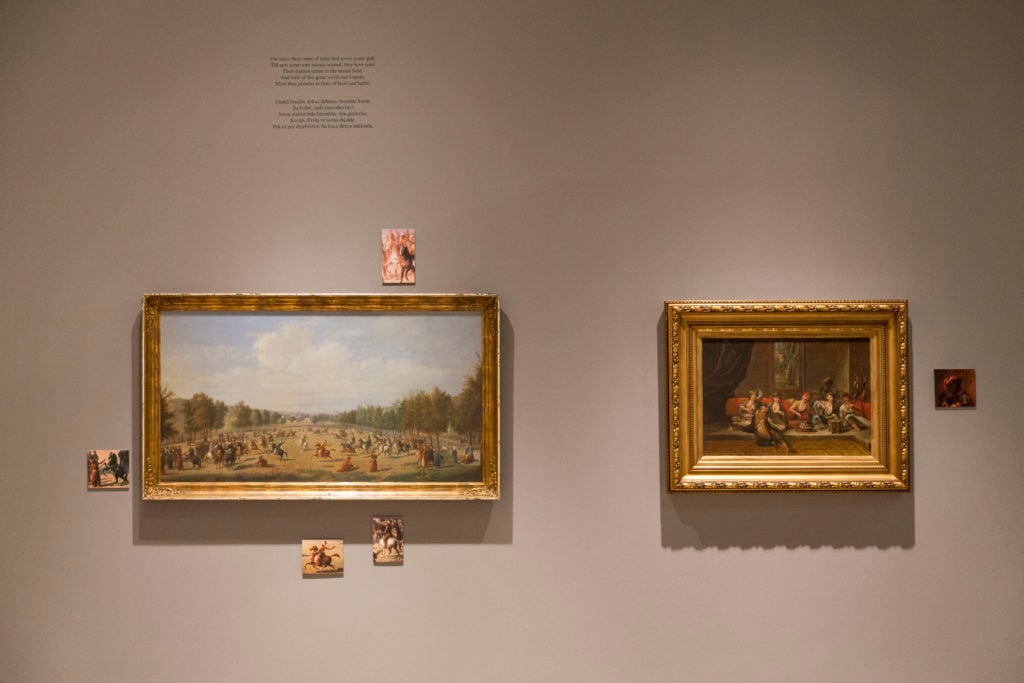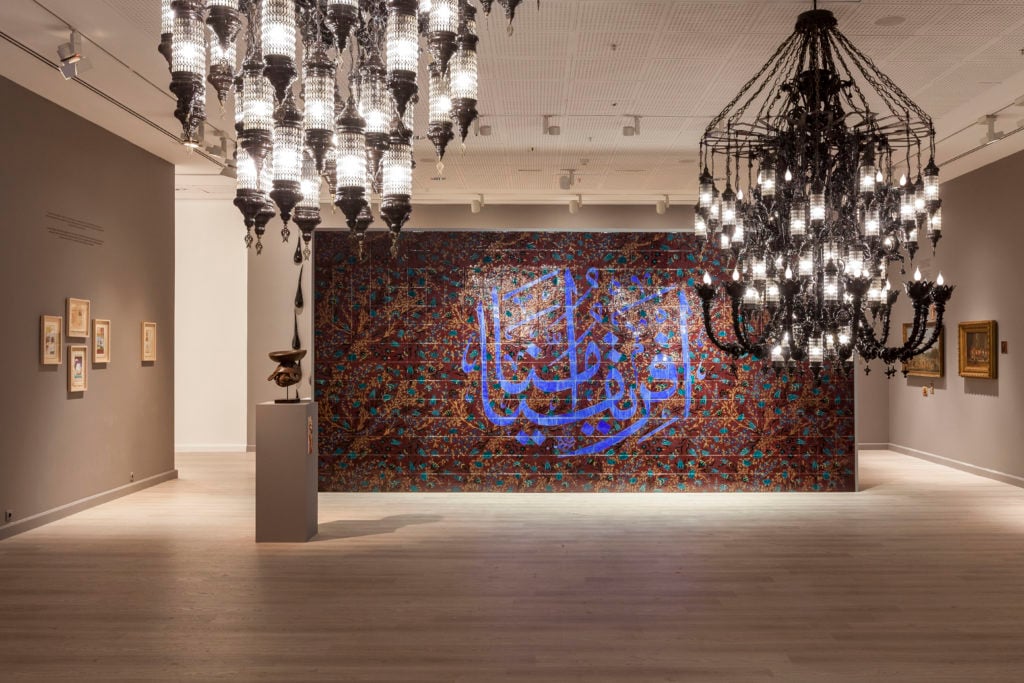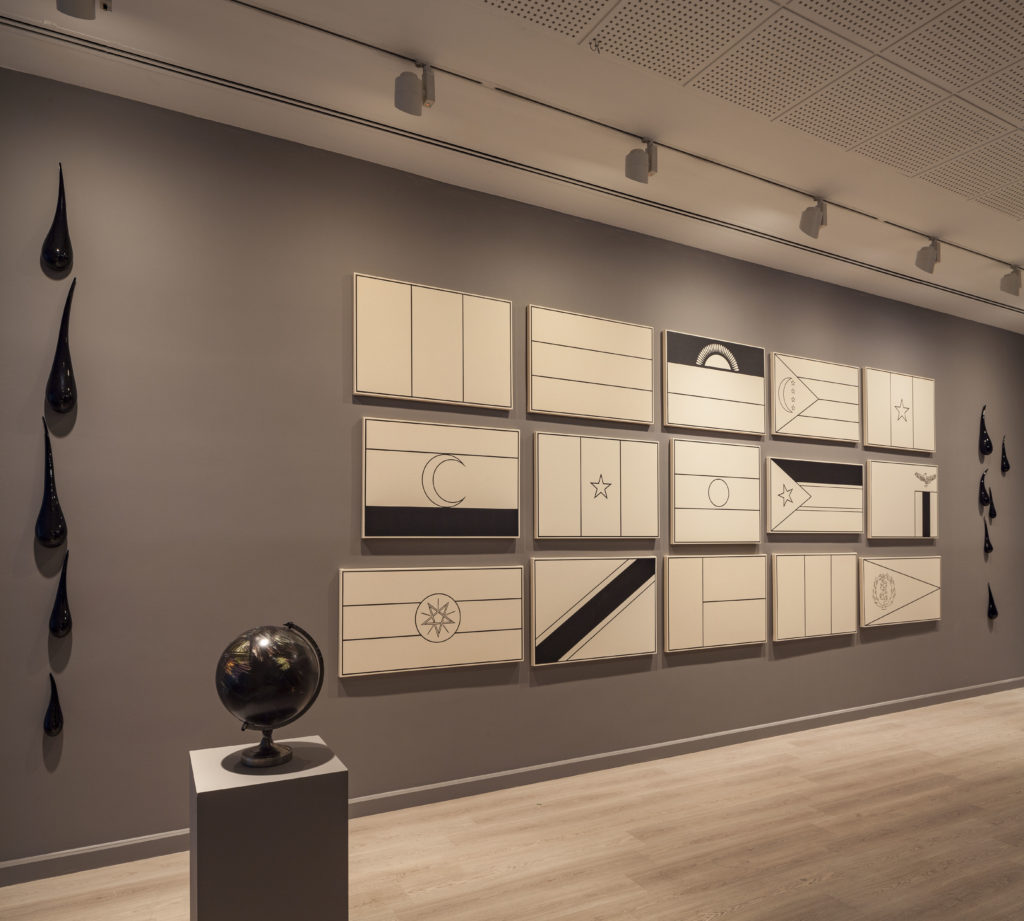Art & Exhibitions
‘The Curators Were Shocked’: In Istanbul, Fred Wilson Exposes the Black Art History Hidden in Plain Sight
'Afro Kismet' is a timely updating of Wilson's famed 2003 Venice Biennale pavilion.

'Afro Kismet' is a timely updating of Wilson's famed 2003 Venice Biennale pavilion.

Rachel Corbett

“Why are we here?”
This question was whispered to me by a puzzled fellow member of a tour group at Istanbul’s Pera Museum. We were, after all, supposed to be touring the Istanbul Biennial, a contemporary art survey. And the antique paintings and engravings of Turkish social life around us looked awfully old.
But something was definitely off. Some of the works were authentically historical, while others—a chandelier, tiles printed with Arabic calligraphy, black-face miniatures—felt subtly different. In fact, these were designed to simulate historical artifacts by the artist Fred Wilson.
Wilson laughed when I recounted this moment of confusion to him. “I love it,” he said. “I’m interested in the museum because it’s a place where no one expects to be misled. Whatever they give you, you believe.”
Afro Kismet, the gallery-wide installation at the Pera Museum that is Wilson’s contribution to the biennial, projects the look and feel of a historical museum show, though closer inspection reveals inconsistencies.
The antique Iznik tiles, for instance, are black, which is almost never the case in reality, while the blue Arabic lettering on the wall reads “Black is beautiful” and “Mother Africa.” Perhaps most telling for the lay observer is a series of Ottoman-era paintings in which Wilson has identified at least one African figure and then painted blown-up portraits of him or her to hang next to the originals.

Fred Wilson’s historical and contemporary painting pairings in the Istanbul Biennial. Courtesy of Pace Gallery and Fred Wilson.
“I’m shifting the gaze,” he explained.
According to Wilson, even the Pera Museum’s curators literally couldn’t see these black figures at first. When he asked them to pull out all the paintings from storage that depicted African figures, they turned up only a few. But he pressed them, asking if he could look himself—and in the end he found about twice as many more. “They weren’t predisposed to seeing it,” he says. “These historical narratives don’t go along with art historical scholarship.”
The artist Michael Elmgreen, who co-curated the 2017 Istanbul Biennial with his partner, Ingar Dragset, said that the Pera’s curators were “shocked” by the process of revisiting these paintings. “They didn’t expect to hear, ‘The guy in the corner there, are you actually aware of what he is?’ For them it was, ‘No, we never thought about that, we only looked at the main figure in the painting.'”
The museum itself has been Wilson’s primary medium for decades. In his groundbreaking 1992 installation “Mining the Museum,” he curated a a selection of objects from the Maryland Historical Society’s collection to highlight unsettling juxtapositions, putting, say, slave shackles alongside a silver tea set.

Installation view of Fred Wilson’s Afro Kismet (2017) at the Istanbul Biennial. Courtesy of Pace Gallery and Fred Wilson.
“Fred works with identity and how it’s put on official display, or how it’s not even conscious of being part of an official display,” says Dragset. “I think he’s done that brilliantly here.”
Wilson was able to play effectively with the confusion inspired by Afro Kismet because he’s done a version of it before. The installation was largely a reprisal of his contribution to the 2003 Venice Biennale, where he represented the US. For that project, he filled the American Pavilion with historical and pseudo-historical objects that drew attention to the roles Africans played in Venetian history. The show also included a black chandelier, made of Murano glass, and Venetian Renaissance paintings where he similarly drew out the identities of the black figures. He also installed several “blackamoors,” statues of grinning black servants that are common in Venetian palazzos and hotels, but almost unnoticed by today’s tourists.
Wilson first became familiar with the presence of Africans in Turkey—including the bizarre phenomenon of black eunuchs who served sultans in the Ottoman court—through his research into Venice. He has wanted to explore this “other side of the coin” ever since, he says—that is, slavery and the presence of Africans outside of the Americas. “It seems to me that no one really acknowledges or knows much about African slavery in Europe from those early centuries.”

Installation view of Fred Wilson’s Afro Kismet (2017) at the Istanbul Biennial. Courtesy of Pace Gallery and Fred Wilson.
Wilson made no less than seven research and fabrication trips to Istanbul from New York in the lead-up to the biennial. “This was much more labor intensive [than Venice] because I had things made,” he says. He worked with local artisans to build the chandelier, craft the tiles, and sculpt the miniatures. He also collected lithographs and photos from Istanbul antique shops, then masked the images so that only the black figures, previously hidden in the background, remained visible.
If the past is a judge, Wilson’s interventions do have the power to change how their audience sees the world. Elmgreen remembers how Wilson’s blackamoors affected visitors to the 2003 Venice Biennale: “We went to different parties in the palazzi in Venice and they would have all these figures there, but because of [Wilson’s] exhibition they tried to cover them up,” he recalls. “They suddenly felt so ashamed. They suddenly had an awareness of what the fuck they are actually living with here.”
The Istanbul Biennial runs through November 12, 2017.